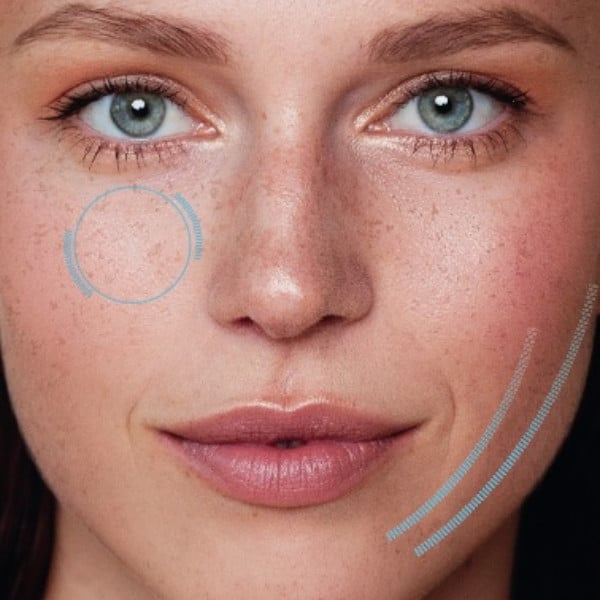Choosing the right dermal filler can be overwhelming with the variety of options available. Whether you’re considering enhancing your lips, smoothing wrinkles, or rejuvenating your skin, understanding the factors involved is crucial. This guide will walk you through everything you need to know about selecting the perfect dermal filler in Melbourne.
What Are Dermal Fillers?
Dermal fillers are injectable substances used to plump up skin, fill lines and wrinkles, and restore volume lost due to aging or other reasons. They are a popular non-surgical cosmetic treatment choice for enhancing facial features.
Types of Dermal Fillers Available
There are several types of dermal fillers, each designed with specific purposes and compositions:
- Hyaluronic Acid Fillers: These are the most common fillers, known for their natural-looking results and versatility.
- Calcium Hydroxylapatite (CaHA) Fillers: Provide a more robust lifting effect and stimulate collagen production.
- Poly-L-lactic Acid Fillers: Stimulate collagen production gradually and are suitable for deeper facial wrinkles.
- Polymethylmethacrylate (PMMA) Fillers: Considered semi-permanent and used for deeper lines and volume loss.
Considerations Before Choosing
When selecting a dermal filler, consider the following factors:
- Treatment Area: Different fillers are better suited for specific areas of the face.
- Desired Results: Discuss your aesthetic goals with your provider.
- Medical History: Inform your provider about any allergies or medical conditions.
- Budget: Cost varies based on the type of filler and amount needed.
Finding a Qualified Provider
Choosing a qualified provider is crucial for a safe and satisfactory outcome. Look for:
- Credentials: Ensure your provider is trained and certified in administering fillers.
- Experience: Ask about their experience with the specific type of filler you’re considering.
- Client Reviews: Check reviews and before-and-after photos to gauge their work.
Understanding Treatment Expectations
Before your treatment:
- Consultation: Discuss expectations, potential results, and any concerns.
- Procedure Details: Understand how the procedure will be performed and what to expect during and after.
Cost Considerations
Costs of dermal fillers can vary widely depending on the type of filler and the amount needed. Factors influencing cost include:
- Type of Filler: Hyaluronic acid fillers are generally more affordable compared to semi-permanent fillers.
- Provider’s Expertise: Experienced providers may charge more for their services.
- Additional Treatments: Sometimes multiple sessions are needed for optimal results.
Recovery and Aftercare
After your treatment:
- Immediate Aftercare: Follow any specific instructions provided by your provider.
- Expected Recovery Time: Most people resume normal activities immediately after treatment.
- Long-term Care: Protect your skin from sun exposure and follow-up as recommended.
Potential Side Effects and Risks
While dermal fillers are generally safe, they can pose risks:
- Common Side Effects: Temporary swelling, redness, or bruising at the injection site.
- Rare Risks: Allergic reactions, infection, or migration of filler material.
Longevity of Results
The duration of results varies:
- Hyaluronic Acid Fillers: Results typically last 6-18 months, depending on the product used.
- Semi-permanent Fillers: May last several years but require periodic touch-ups.
Personal Consultation
Schedule a consultation with a cosmetic clinic to discuss your specific needs, goals, and any concerns you may have about dermal fillers.
FAQs
What are dermal fillers made of?
Dermal fillers can be made of various materials, including hyaluronic acid, calcium hydroxylapatite, poly-L-lactic acid, and polymethylmethacrylate.
Are dermal fillers painful?
Most dermal fillers contain a numbing agent like lidocaine to minimize discomfort during treatment.
How long do dermal fillers last?
The longevity of dermal fillers varies by type, lasting anywhere from 6 months to several years.
What should I avoid after getting dermal fillers?
Avoid excessive sun exposure, strenuous exercise, and alcohol for the first 24-48 hours post-treatment.
Are there any serious risks associated with dermal fillers?
Serious complications are rare but can include allergic reactions, infection, or filler migration.
Conclusion
Choosing the right dermal filler in Melbourne involves understanding your goals, researching your options, and consulting with a qualified provider. By considering these factors carefully, you can achieve natural-looking results that enhance your appearance safely and effectively.

